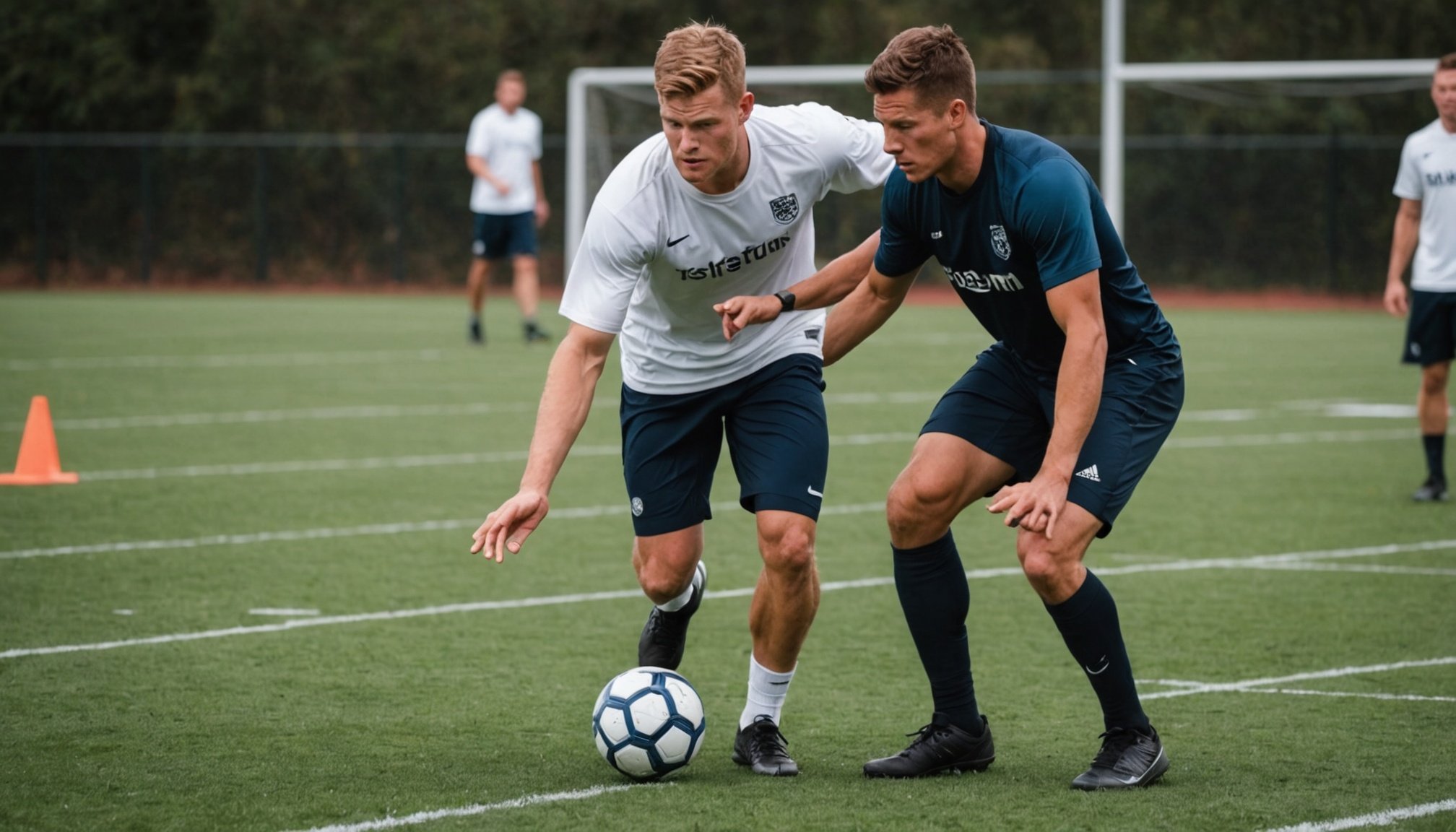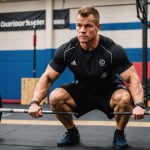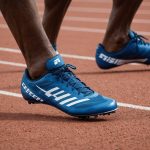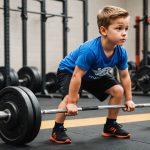Crafting Impactful Off-Field Training Sessions for Football Athletes
When it comes to football, the success of a team or an individual athlete is not solely determined by their performance on the field. Off-field training sessions are crucial for enhancing sports performance, preventing injuries, and developing the skills necessary for peak performance. Here’s a comprehensive guide on the essential elements for crafting impactful off-field training sessions.
Understanding the Importance of Off-Field Training
Off-field training is more than just a supplementary activity; it is a cornerstone of sports performance. It involves a range of activities that go beyond the traditional drills and practices conducted on the field.
Have you seen this : Exploring the Impact of Brexit on Non-UK Football Players in English Leagues
“True performance training involves more than just the hour or two spent in a gym. Athletes need to focus on recovery, sleep, nutrition, and mindset. These factors are often overlooked, but they are just as important as the physical training itself,” emphasizes an expert from Total Performance Strength & Conditioning.
Sport-Specific Strength Training
One of the most critical components of off-field training is sport-specific strength training. This approach goes beyond general fitness by targeting the muscle groups and biomechanics crucial for specific athletic activities.
Have you seen this : Essential Guide to Seamlessly Transitioning from Player to Referee in Football
“Sport-specific strength training not only optimizes strength and power but also fine-tunes the athlete’s body to perform movements that are fundamental to their sport more effectively and efficiently,” explains a report on maximizing on-field performance.
Here are some key aspects of sport-specific strength training:
- Assessment of Needs: Conduct a thorough analysis of the key physical demands of the sport. Identify the primary movements, the muscles involved, and the typical patterns of play.
- Developing a Training Program: Design a training regimen that targets the specific muscles and movements crucial for the sport. For example, football players might include drills that improve explosive power and agility such as plyometrics and sprint training.
- Monitoring Progress and Adjustments: Regularly assess the athlete’s progress through formal evaluations like timed drills or strength assessments and informal feedback. Make adjustments to the training program as needed to avoid overtraining or injury risk.
Table: Comparison of General vs. Sport-Specific Strength Training
| Aspect | General Strength Training | Sport-Specific Strength Training |
|---|---|---|
| Focus | General muscle groups and overall fitness | Specific muscle groups and movements relevant to the sport |
| Benefits | Improved general fitness, muscle strength | Enhanced performance, reduced injury risk, improved muscle efficiency |
| Examples | Weightlifting, running | Plyometrics for football, lateral movements for tennis |
| Outcomes | General health benefits | Improved on-field performance, better injury prevention |
Speed and Agility Work
Speed and agility are essential components of football performance. Off-field training sessions should include specific drills designed to optimize movement efficiency.
“Speed and agility work is crucial for optimizing movement efficiency. This includes drills such as shuttle runs, cone drills, and ladder exercises,” notes a training expert.
Here are some actionable tips for incorporating speed and agility training:
- Shuttle Runs: Set up two lines 10-20 yards apart. The player starts at one line, sprints to the other, and then returns.
- Cone Drills: Use cones to create a zigzag or circular course. Players weave through the course, focusing on quick changes of direction.
- Ladder Drills: Use a ladder on the ground to perform footwork drills such as lateral shuffles and carioca drills.
Mobility and Flexibility Training
Mobility and flexibility are often overlooked but are critical for preventing injuries and enhancing performance.
“Mobility and flexibility training is essential to prevent injuries. This includes exercises that improve range of motion and reduce muscle stiffness,” explains a sports performance expert.
Here are some key mobility and flexibility exercises:
- Dynamic Stretching: Incorporate dynamic stretches such as leg swings, arm circles, and hip rotations before training sessions.
- Foam Rolling: Use foam rollers to improve muscle recovery and reduce muscle soreness.
- Yoga or Pilates: Incorporate yoga or Pilates sessions to enhance flexibility and core strength.
Recovery and Nutrition Protocols
Recovery and nutrition are vital components of off-field training. Athletes need to focus on these aspects to maximize their gains and prevent burnout.
“Recovery and nutrition protocols are just as important as the physical training itself. Athletes need to ensure they are getting adequate sleep, nutrition, and recovery time to support their training,” emphasizes a sports performance expert.
Here are some tips for effective recovery and nutrition:
- Sleep: Ensure athletes get at least 7-9 hours of sleep per night to aid in muscle recovery and performance.
- Nutrition: Focus on a balanced diet that includes protein, carbohydrates, and healthy fats. Ensure athletes are hydrating adequately throughout the day.
- Recovery Techniques: Incorporate recovery techniques such as ice baths, compression garments, and massage therapy to aid in muscle recovery.
Mental Health and Life Skills
Off-field training is not just about physical development; it also encompasses mental health and life skills.
“The mental health benefits and life skills that come with sports training—discipline, time management, resilience—will serve athletes well in all areas of life,” notes a report on sports performance training.
Here are some ways to integrate mental health and life skills into off-field training:
- Mindfulness and Meditation: Incorporate mindfulness and meditation sessions to help athletes manage stress and improve focus.
- Team Building Activities: Organize team-building activities that promote camaraderie and teamwork.
- Goal Setting: Help athletes set both short-term and long-term goals, both on and off the field.
Decision Making and Ball Control Drills
Decision making and ball control are critical skills for football athletes. Off-field training sessions can include drills that simulate game-like scenarios to improve these skills.
“Decision making and ball control drills should be designed to mimic the specific physical demands of the sport. This includes drills such as small-sided games and shooting drills,” explains a coaching expert.
Here are some actionable tips for decision making and ball control drills:
- Small-Sided Games: Set up small-sided games such as 3v3 or 4v4 to simulate game-like scenarios and improve decision making.
- Shooting Drills: Incorporate shooting drills that focus on different types of shots, such as volleys, penalties, and long-range shots.
- Dribbling Drills: Use dribbling drills such as cone drills and ladder drills to improve ball control.
High Intensity Interval Training (HIIT)
High intensity interval training (HIIT) is a powerful tool for improving cardiovascular fitness and enhancing sports performance.
“HIIT involves short bursts of high-intensity exercise followed by brief periods of rest. This type of training can significantly improve cardiovascular fitness and enhance sports performance,” notes a fitness expert.
Here is an example of a HIIT session plan:
| Exercise | Duration | Rest |
|---|---|---|
| Sprints | 30 seconds | 30 seconds |
| Burpees | 30 seconds | 30 seconds |
| Jump Squats | 30 seconds | 30 seconds |
| Plank | 30 seconds | 30 seconds |
Performance Analysis and Feedback
Performance analysis and feedback are essential for continuous improvement. Off-field training sessions should include regular assessments and feedback to help athletes adjust their training.
“Regular progress tracking and adjustment of targets ensure the training program remains effective throughout the season,” emphasizes a sports performance expert.
Here are some tips for performance analysis and feedback:
- Video Analysis: Use video footage to analyze player performance and provide feedback on technique and decision making.
- Coaching Feedback: Provide regular coaching feedback on player performance, highlighting areas of improvement and strengths.
- Player Self-Assessment: Encourage players to self-assess their performance, setting personal goals and tracking progress.
Crafting impactful off-field training sessions for football athletes requires a comprehensive approach that includes sport-specific strength training, speed and agility work, mobility and flexibility training, recovery and nutrition protocols, mental health and life skills, decision making and ball control drills, high intensity interval training, and performance analysis and feedback.
By integrating these elements into their training program, athletes can enhance their performance, reduce the risk of injury, and achieve peak performance on the field.
“True performance training requires a commitment that must match or exceed the athlete’s aspirations. Athletes need to be self-driven and have a clear understanding of what’s required at each level,” concludes a sports performance expert.
In the end, it’s not just about the time spent on the field; it’s about the dedication and commitment to a well-rounded training program that includes both physical and mental development.











